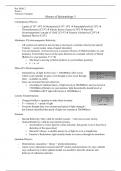Lecture notes
History of Epistemology
- Module
- Cells and Immunity (BI2BC45)
- Institution
- University Of Reading (UoR)
Historical Significance of Names such as; Maxwell, Lorentz, Einstein, Heisenberg, Karl Popper, Thomas Kuhn, Imre Lakatos, Feyerabend.
[Show more]



